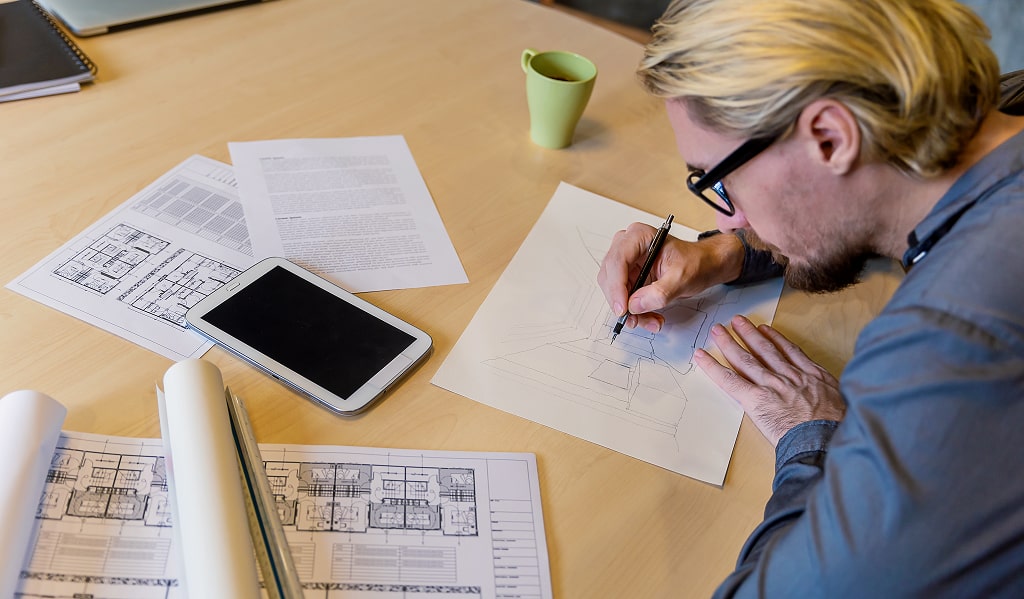Construction projects often run into delays and extra costs because key planning steps are missed at the start. Many of these problems can be avoided with one simple move: appointing a principal designer early.
Under the UK’s CDM Regulations 2015, the principal designer makes sure safety and compliance are built into the design stage.
When they join the project from day one, risks are spotted sooner, decisions are clearer, and the whole process runs more smoothly. This early step doesn’t just help meet legal requirements. It saves both time and money.
The Construction Consultants understand how important an early appointment is. With the right guidance, clients can avoid unnecessary costs, reduce risks, and keep their projects on track from the beginning.
What Is a Principal Designer and Why Do They Matter?
The role of a principal designer was introduced under the UK’s Construction (Design and Management) Regulations 2015.
These rules apply to most construction projects, regardless of size, and place clear duties on clients, designers, and contractors. Among the most important roles is the principal designer, whose job is to lead on health and safety during the design stage.
In practice, the principal designer makes sure that safety isn’t an afterthought but is built into the project from the very beginning. Their responsibilities include
- Planning how risks will be managed throughout the design process.
- Coordinating designers and contractors so everyone works with the same safety priorities.
- Checking that design choices are practical and safe before they are put on site.
- Ensuring compliance with CDM 2015, protecting both workers and clients.
This role matters because many project problems can be traced back to poor planning.
According to the Health and Safety Executive (HSE), around half of all fatal and serious injuries in construction are linked to decisions made during design.
Think of the principal designer as the link that connects architects, engineers, and contractors.
They make sure everyone is pulling in the same direction and that safety and compliance are part of every decision. Without them, important details can be missed, leading to delays, budget overruns, or accidents that could have been avoided.
Why Appointing a Principal Designer Early Matters
Early Decisions Shape Outcomes
The first choices made in a construction project often decide how successful it will be. Appointing a principal designer right from the start might seem like a small step, but it lays the foundation for everything that follows.
When this role is delayed, projects face bigger risks, higher costs, and longer timelines. Early involvement helps stop problems before they even begin.
Key Benefits of Early Appointment
Bringing in a principal designer at the beginning means they can
- Spot risks early – hazards are identified before they’re built into the design.
- Shape safer designs – layouts and materials are chosen with safety in mind.
- Coordinate the team – architects, engineers, and contractors work together smoothly.
- Prevent costly changes later – design adjustments are always cheaper than on-site fixes.
Backed by Industry Evidence
The Health and Safety Executive (HSE) highlights that poor planning and late involvement of safety professionals are among the main reasons for delays and overspending in construction. Appointing a principal designer early is a practical way to avoid these issues.
From Reactive to Proactive
The earlier a principal designer is involved, the more influence they have. Instead of reacting to problems as they appear, they prevent them from happening in the first place.
This approach leads to safer designs, fewer surprises, and a smoother process overall. In simple terms, it saves both time and money, and helps the project run with confidence from day one.
How a Principal Designer Saves Time on Your Project

Spotting Risks Before They Become Problems
Every project faces risks, but many can be avoided when identified early. A principal designer reviews plans with safety in mind and ensures risks are addressed before they reach the site.
Clearer Communication Among Teams
Construction involves many people, architects, engineers, builders, and contractors. Without clear coordination, miscommunication is almost certain. A principal designer ensures everyone works to the same safety and design plan, saving time that would otherwise be lost to confusion or disputes.
Smoother Approval Process
Delays often happen during approvals or compliance checks. A principal designer knows what regulators and inspectors look for. They prepare designs that meet building control and safety standards from the start, reducing the back-and-forth that slows projects down.
According to the UK’s National Audit Office, poor planning and delays in meeting safety standards are key drivers of project overruns. With a principal designer guiding the design stage, many of these delays can be avoided.
How a Principal Designer Helps You Save Money
Avoiding Costly Mistakes
Mistakes at the design stage often cost little to fix. But once work has started on site, the same mistake can cost thousands. A principal designer helps spot these issues early, protecting the budget.
Smarter Material Choices
They also guide choices about materials and layouts. By considering safety, practicality, and costs together, they help clients avoid paying for unnecessary features or unsafe designs that later need correction.
Reducing Delays
Every extra day on site means more costs for labour, equipment, and management. A principal designer’s planning reduces delays and keeps work flowing.
According to a report from the Royal Institution of Chartered Surveyors (RICS), delays in UK construction can add 10-15% to overall costs. Early appointment of a principal designer helps prevent these overruns by ensuring better planning from the start.
What Happens If You Delay Appointing a Principal Designer?
Delaying the appointment of a principal designer may seem like a small decision, but the consequences can be serious. Waiting too long means missing out on the early guidance that can prevent problems before they occur.
Here’s what can go wrong when this role is left too late
Non-compliance with CDM 2015
Under UK law, every project that involves more than one contractor must have a principal designer in place. Failing to appoint one, or doing so too late, leaves the client legally responsible. This can lead to enforcement action, fines, and reputational damage.
Higher risk of accidents
Many accidents on-site can be traced back to poor design choices. If health and safety are not considered at the design stage, workers face unnecessary hazards later. According to the Construction Industry Training Board (CITB), a lack of proper safety planning is one of the main causes of serious incidents in construction.
Increased costs
Fixing a design issue during planning is cheap. Fixing it on-site, once materials are purchased and work has started, is expensive. Delaying the appointment of a principal designer often means problems are discovered late, when solutions cost far more.
Delays in completion
Safety issues and design conflicts that emerge on site don’t just cost money; they also add time. Projects may stall while new plans are drawn up or approvals are resubmitted.
In short, delaying this appointment exposes clients to legal, financial, and practical risks, all of which could have been avoided with early planning.
Why Early Appointment Benefits Everyone Involved
Appointing a principal designer early doesn’t just help the client; it improves the experience for the entire project team. Everyone benefits from having safety and design priorities set from the start.
Clients
They gain peace of mind knowing risks are managed properly and compliance with CDM 2015 is met. Projects are less likely to face budget overruns or costly disputes.
Contractors
Clearer instructions mean fewer changes and fewer conflicts on site. Contractors can focus on delivering the work safely and efficiently, without second-guessing design choices.
Workers
With safety built into the design, workers face fewer hazards on site. This creates a safer working environment, reduces the risk of accidents, and improves morale.
The project as a whole
A project with fewer accidents, fewer disputes, and smoother progress earns a stronger reputation. This benefits not only the client but also every business involved in delivery.
According to the Health and Safety Executive (HSE), early design planning reduces accidents and creates safer, more efficient projects. Early appointment of a principal designer helps build this safety culture from the ground up.
In the long run, this isn’t just about compliance. It’s about building trust, efficiency, and a positive reputation across the construction industry.
How to Choose the Right Principal Designer
Not every principal designer will be right for your project. The role is central to safety, compliance, and smooth delivery, so it’s important to choose carefully.
A good appointment can save time and money, while the wrong one may create confusion or risks.
When selecting a principal designer, here are the qualities to look for
Experience with similar projects
Every project has its own challenges. A housing development is very different from a school refurbishment or a commercial build. The right principal designer should have direct experience in the type of work you’re doing, so they can anticipate risks and offer practical solutions.
Strong knowledge of CDM 2015
Compliance isn’t optional. It’s a legal requirement. A competent principal designer should have a clear understanding of the Construction (Design and Management) Regulations 2015. This ensures your project not only meets standards but also avoids costly legal issues.
Good communication skills
The role involves working with architects, engineers, contractors, and clients. Without strong communication, misunderstandings can cause delays or mistakes. A good principal designer can explain complex requirements in simple terms and keep everyone aligned.
A proactive approach
The best principal designers don’t wait until problems appear. They spot risks early and address them before they grow into bigger issues. This forward-thinking approach keeps projects moving and reduces the chance of setbacks.
According to gov.uk guidance on CDM regulations, clients must appoint a competent principal designer. Making the right choice ensures legal compliance and a smoother, safer, and more cost-effective project from start to finish.
Why The Construction Consultants Can Support Your Project
Choosing the right principal designer can feel daunting. That’s where The Construction Consultants can help. Our team understands the CDM regulations inside out and has the experience to guide projects safely from the very beginning.
We don’t just focus on compliance. We help clients save time, reduce costs, and avoid unnecessary stress. With early involvement, our consultants ensure risks are managed properly, designs stay practical, and projects move forward with confidence.
Start Smart, Build Better
Delays, overspending, and safety risks are some of the biggest challenges in construction. Many of them can be prevented simply by appointing a principal designer early.
From spotting risks before they cause trouble to keeping teams coordinated and projects compliant, the principal designer’s role is vital. Early appointment means smoother progress, lower costs, and safer outcomes.
For clients who want to start their projects on the right foot, early planning is key.
The Construction Consultants offers the expertise and support needed to make sure principal designers are appointed at the right time, so every project can run smarter, safer, and more cost-effectively from the very beginning.

